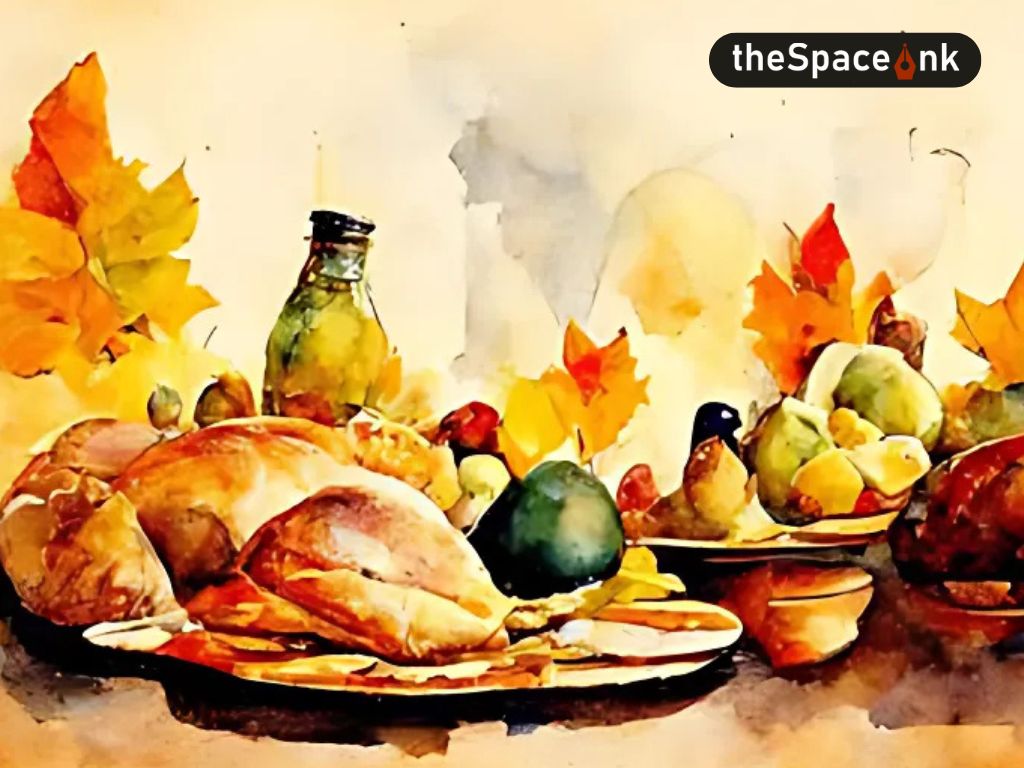Thanksgiving is the biggest culinary event in the USA and Canada and the roast turkey is the centrepiece of a Thanksgiving spread. The annual family food fest is celebrated with painstakingly cooked elaborate dinners that are usually planned around a generous juicy roast turkey commonly served with potatoes, vegetables and gravy as sides. But how did this bird find its way at the head of the Thanksgiving table? Let’s find out.
How the turkey got its name
The turkey, a bird of the Meleagrisis family, is native to North America. It is available in two species– wild turkey (Meleagris gallopavo) and ocellated turkey (Meleagris ocellata). When European settlers arrived in the New World and first encountered this somewhat strange bird, they found its likeness to the African guinea fowl sold in European markets by Turkish merchants. The African fowl, because it was sold by the Turks, was called ‘turkey cock’ or ‘turkey coq’ in Britain. The name sustained across the seas. But here’s the most interesting part. The Turks knew the turkey was not from Turkey. So they decided to call it ‘Hindi’ because they thought the bird was Indian. Turns out, they weren’t alone– the French and Dutch thought the same. The French named it ‘poulet d’Inde’ or ‘chicken from India’ and the Dutch used the term ‘Calicut-hoen’ or ‘hen from Calicut’.
When did Europeans first have roast turkey
The indigenous people of central and southern America and Mexico have been hunting and cooking the bird since antiquity. But it arrived at European tables only a few hundred years ago. It was the Spanish invaders who introduced the Aztec turkey in Europe in the sixteenth century.
Also read: Ode to Thanksgiving
Henry VIII is the first British monarch to have a taste of turkey. It was then considered an exotic bird. The bird became quite popular among the aristocracy because: 1) it was big enough for an elaborate feast and for making an impression on guests and 2) it was tastier and less stingy than peacock (another royal favourite).

Thanksgiving and Christmas staple
Since 1863, Thanksgiving has been celebrated every year on the last Thursday of November. But turkey continued to be an aristrocratic dish until the early twentieth century. Earlier, the most commonly consumed Thanksgiving delicacy was pork ribs, as pigs were traditionally slaughtered in November. American author Sarah Josepha Buell Hale apparently played a role in popularising turkey as a Thanksgiving dish. In her novel ‘Northwood’, she devoted one whole chapter describing a Thanksgiving meal with turkey roast. She writes: “The roasted turkey took precedence on this occasion, being placed at the head of the table; and well did it become its lordly station, sending forth the rich odour of its savoury stuffing, and finely covered with the frost of its basting.” Sarah Josepha Hale also campaigned relentlessly to establish Thanksgiving as a national holiday in the USA.
Turkey sits at the head of the table
In the 20th century, the wild turkey became endangered as a species but thrived after decades of conservation. According to the National Turkey Federation, USA, “more than 216 million turkeys were raised on about 2,500 farms across the United States” in 2021. The Federation also states, “In 2021, U.S. consumption of turkey was 5.1 billion pounds and 15.3 pounds per capita.” The USA is the largest producer and exporter of turkey. The National Turkey Federation also gifts a live turkey to the US President every year shortly before Thanksgiving day. The President then issues a ceremonial ‘pardon’ to the turkey and spares his life. However, prior to the 1970s, the turkey presented to the President was slaughtered and cooked at the White House.
Enough of turkey trivia. It is now time to sit down to a happy meal with your families. Happy Thanksgiving everyone.
Images courtesy: Pixabay








